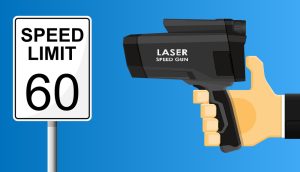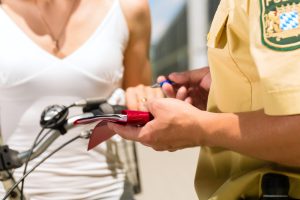What is an E-bike?

An E-bike, sometimes known as an electronic bike, is a bicycle that has an electric motor to help you pedal. An installed rechargeable battery on the bike will provide power for the motor. Since it is an electronic bike, the motor must assist you rather than act as a sole source of propulsion for classification. As a result, in order to get that help, the rider must pedal. Depending on how hard the rider is pedaling and the level of help they want, the motor’s output is controlled.
The criteria for a bicycle to be considered electrically assisted (based on the UK’s Department of Transport)
It must demonstrate one of the following two possibilities:
- the production of power
- which company made the motor
the following must also be present:
- the voltage of the battery
- the bicycle’s top speed
Its electric drive:
- must have a 250-watt maximum power output.
- shouldn’t be able to move the bike forward at speeds higher than 15.5 mph.
How do you regulate motor power?

Three to five levels of assistance can often be chosen on an electric bike using its controller. For tackling challenging off-road climbs, you have the ability to choose from a small push to a lot of power depending on the motor’s characteristics of the bike. Some devices will additionally feature a “boost” button that you may use to temporarily increase the power output. In addition, most bikes offer an optional walk assistance that makes it easier for you to move forward while you are not riding. As you ride, you can select between assistance settings, and there is typically an option to turn the motor off completely and only use your pedals to move.
How much more masses are the motor and batteries on the bike adding?

The weight of e-bike motors and batteries varies greatly, and electric bikes are heavier than ordinary cycles. The smallest systems, which are commonly seen on electric road bikes, weigh less than 4 kg, whereas the majority of systems weigh between 6 and 8 kg, occasionally even more. An electric bike’s additional mounting points and necessary frame reinforcing might also result in weight gain. Your system’s weight will partly rely on your budget and the bike’s planned use. While an electric road bike requires less assistance and will prioritize reduced weight, bikes that demand a lot of power, such as an e-MTB or cargo bike, are more likely to have a bigger motor and battery combination.
How far can an electric bicycle travel?

Electric bike batteries can provide you with a range of up to 100 miles or more on a single charge, depending on their capacity (measured in watt-hours and shortened to Wh). Because batteries are costly, an e-bike with a longer range will typically cost more. In addition to a charge level indicator, certain control systems may predict your riding range or enable you to finish the targeted ride distance, and adjust the power output. An additional battery that could fit in a bottle cage can be plugged into some e-bikes to increase range. To save battery life and increase the bike’s range, you can optionally reduce the level of help while riding. Although a lot of manufacturers will provide an estimated range for a certain model of bike, and even though a bike’s potential range may be predicted using its engine power and battery capacity, it ultimately depends on how much assistance you’re using. Depending on the model, charger, and battery capacity, it can take anything from three to nine hours or more to fully charge the battery from the start.
What variations of electric bikes exist?

Hybrid and mountain bikes are the two most popular forms of electric bicycles. Square bars and large, puncture-resistant tires are features of electric hybrid bikes that make them practical for commuting to work, shopping, and longer journeys. They might also be equipped with lights, a rack, mudguards, or eyelets for full-length mudguards, as well as a step-through frame for easier mounting and dismounting. Additionally, the number of electric gravel bikes is rising. E-gravel bikes are made to be versatile, giving you the freedom to really expand your riding. With their larger tires and down handlebars, you can ride off-road with confidence. A tiny, adaptable foldable electric bike will be produced, allowing it to be transported on public transportation or folded up for simpler storage at home or at work. Additionally, cargo bikes that are electrically assisted are available that can substitute for a car or van for daily tasks like transporting packages around town. In other words, if you require assistance when riding, an electric bike will work to suit your needs.
Benefits and Drawbacks of an E-bike

Pros:
- Far less expensive than other modes of transportation; the average cost per mile for a modest sedan is about 50 cents. E-bikes only cost 5–10 cents each. If money is tight, $1500 will get you a decent e-bike. Over twice that much is required for a dependable commuting vehicle. Additionally, using an e-bike eliminates the cost of auto insurance. Additionally, maintenance and repairs are substantially less expensive. Additionally, there is no parking fee.
- Faster than a traditional bike: The top speeds of most e-bikes are 20 or 28 mph. Most bikers are unable to pedal themselves to those speeds. Certainly not for very long. With an e-bike, you can go at a greater average speed and get where you’re going faster. You can get up later by reducing the length of your commute.
- Environmentally friendly: This is one of the primary reasons people travel by e-bike rather than by automobile or bus. E-bikes employ electric motors instead of internal combustion engines, which don’t release any harmful emissions into the atmosphere. They are among the most environmentally friendly and cleanest forms of transportation. An effective option to lessen your carbon footprint is to ride an e-bike. Riding a non-powered bike or walking are the only cleaner options.
Cons:
- Costly – The typical e-bike ranges in price from $2,000 to $3,000. A non-powered bike costs about half as much as an electric bike. The battery is the main source of the additional expense. Just these cost between $500 and $800. The motor also incurs additional expenses. You’re better off with a standard bike without a motor if money is short.
- Long charge times: The average e-bike battery needs 3.5 to 6 hours to fully recharge. If you need to take a ride anywhere, this is a long wait. With a 10-amp charger, you can quickly charge some e-bikes, bringing their capacity up to 80% in just one to two hours. Although useful, this is detrimental to battery life.
Finally arriving at the crucial question,
Can an e-bike receive a speeding ticket?
You can receive a speeding ticket when riding an e-bike, which is unfortunate and may come as a surprise, especially if you’re not obeying the traffic laws. However, the speed limits and laws vary depending on the country and province the rider is from.
Speed limits among different countries

The US:
A three-class system is used in 26 states:
- Class 1: 20 mph maximum aided speed with only pedal assistance (32 km). Bicycles with pedal assistance provide additional force while you are currently pedaling.
- Class 2: 20 mph maximum motor-powered speed with only twist throttle assistance (32 km per hour). On a bicycle with a throttle, you can open the throttle to move forward solely on the engine.
- Class 3: maximum assisted speed is 28 mph with only pedal assistance (45 km per hour). Class 3 e-bikes are not permitted on traditional bike lanes, in contrast to Class 1 and Class 2 e-bikes. Long-range electric bikes that can also be used for off-road climbing are among them.
Other states, such as Nevada (NV), have a 750W motor top limit. In Oregon, it rises to 1000W.
UK and UE:
Conventional e-bikes are classified as electrically assisted pedal cycles in the UK (EAPC). The 250-watt electric motor limit applies. The bike should not be propelled when it is moving more than 15.5 mph, per the rules (25 km per hour). For use on public roads, e-bikes are registered as motor vehicles in the UK. Motorcyclists are required to wear helmets.
Canada:
Electric bike classifications do not exist in Canada. Instead, the maximum speed is 500W for all e-bikes in Canada (32 km/h). In Canada, pedal assist and a throttle function are both permitted for e-bikes.
If you’re caught speeding, what happens?

Seattle was the first to issue an e-bike speeding penalty in 2013. It was for going faster than 20 mph (32 kph) in a school zone. On a steep climb, cyclists frequently go faster than the posted speed limit. There is no justification for not having a speedometer or for being unaware of your speed. You might only receive a warning or be required to pay a fine.
In the US, traffic infractions are often handled the same for vehicles and bikes but vary from state to state. You must pay a fine, and the punishment can have an impact on your auto insurance. Bicyclists can lower their fines in many states, including Seattle and California, by enrolling in a traffic school class on bicycle safety. Additionally, this often avoids the ticket from appearing on your record.
Guidelines to follow in order to reduce your risk of receiving a speeding ticket

1)Avoid speeding through a school zone- On a conventional bike, it would be challenging to gauge your speed without a speedometer, but on an electric bike, your LCD screen will provide that information. Cars and electric bikes are subject to the same regulations, motor vehicles or not. Remember that your bike is a substantial piece of machinery with gears and motors and that we must proceed slowly through school zones. In the unfortunate event of a collision, it may hurt a pedestrian or a child. We cyclists can effortlessly pass on our leisurely rides. We should be aware that cyclists can receive a penalty for speeding through construction zones, school zones, and other low-speed zones without realizing it.
2)Restrict from riding too quickly downhill- Speeding downhill is the stuff that thrill seekers live for. The fun includes experiencing the wind on your face and seizing any opportunity to descend quickly. ICBC states that the top speed of an electric bike on flat ground is 32 km/h. Our ENVO electric bikes can legally let you travel up to 32 km/h, but they won’t go any faster. While pedaling, you can increase your speed if you’re going downhill, but the engine can only go 32 km/h. Although everyone is aware of how simple it is to accelerate downward, there are frequent speed traps at the bottom. It’s important to keep an eye on your speed and reduce it if necessary.
3) Check your area’s laws on electric bicycles- There will be a unique set of laws for each province and nation. It’s significant to remember that there are various classifications of electric bikes. Classes 1 and 2 have a top speed that is limited to 32 km/h when using the throttle, pedal assist, or both. Class 3 electric bicycles are not permitted on conventional bike lanes and have a top speed of 45 km/h. It doesn’t hurt to double-check if you’re ever unsure whether your e-bike complies with local regulations. Even if it’s unusual to be stopped while traveling at 35 kph in a bike lane, it’s still a good idea to be aware of your rights and obligations.
Electric bikes provide an excellent compromise between a traditional bike and a car. Electric bicycle laws are typically not unduly onerous. They are there for your protection, nevertheless. Keep in mind that any traffic laws that apply to motor vehicles also apply to electric bikes. When we ride, we frequently forget to consider how quickly we are moving. We bike for the excitement. Even while moving quickly is enjoyable, we frequently overlook how risky it may be in the wrong situation. Be wise and cautious, and be aware that yes riding an electric bike can result in a speeding ticket!

